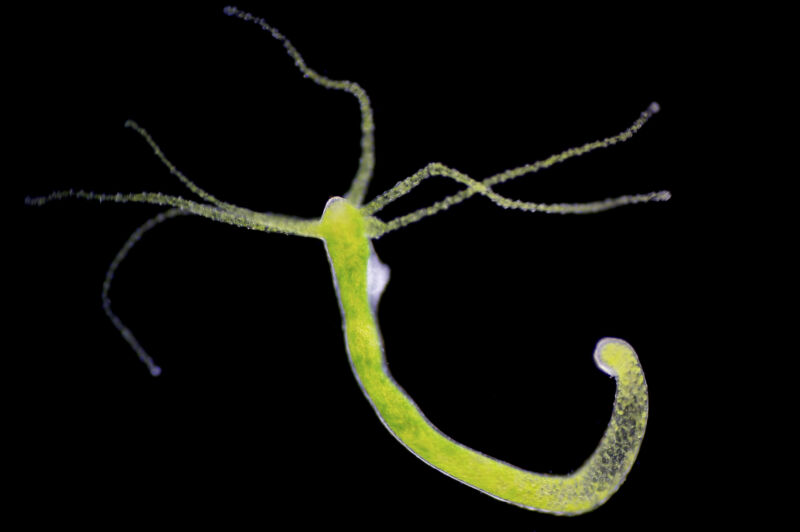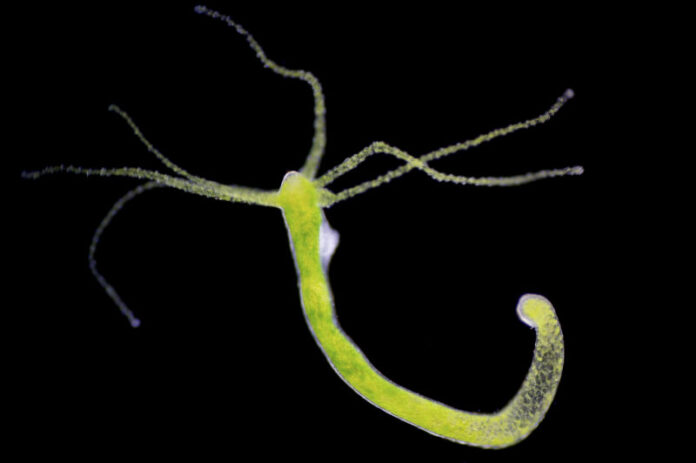
The hydra is a Lovecraftian-looking microorganism with a mouth surrounded by tentacles on one end, an elongated body, and a foot on the other end. It has no brain or centralized nervous system. Despite the lack of either of those things, it can still feel hunger and fullness. How can these creatures know when they are hungry and realize when they have had enough?
While they lack brains, hydra do have a nervous system. Researchers from Kiel University in Germany found they have an endodermal (in the digestive tract) and ectodermal (in the outermost layer of the animal) neuronal population, both of which help them react to food stimuli. Ectodermal neurons control physiological functions such as moving toward food, while endodermal neurons are associated with feeding behavior such as opening the mouth—which also vomits out anything indigestible.
Even such a limited nervous system is capable of some surprisingly complex functions. Hydras might even give us some insights into how appetite evolved and what the early evolutionary stages of a central nervous system were like.
Read 13 remaining paragraphs | Comments
Ars Technica - All contentContinue reading/original-link]




